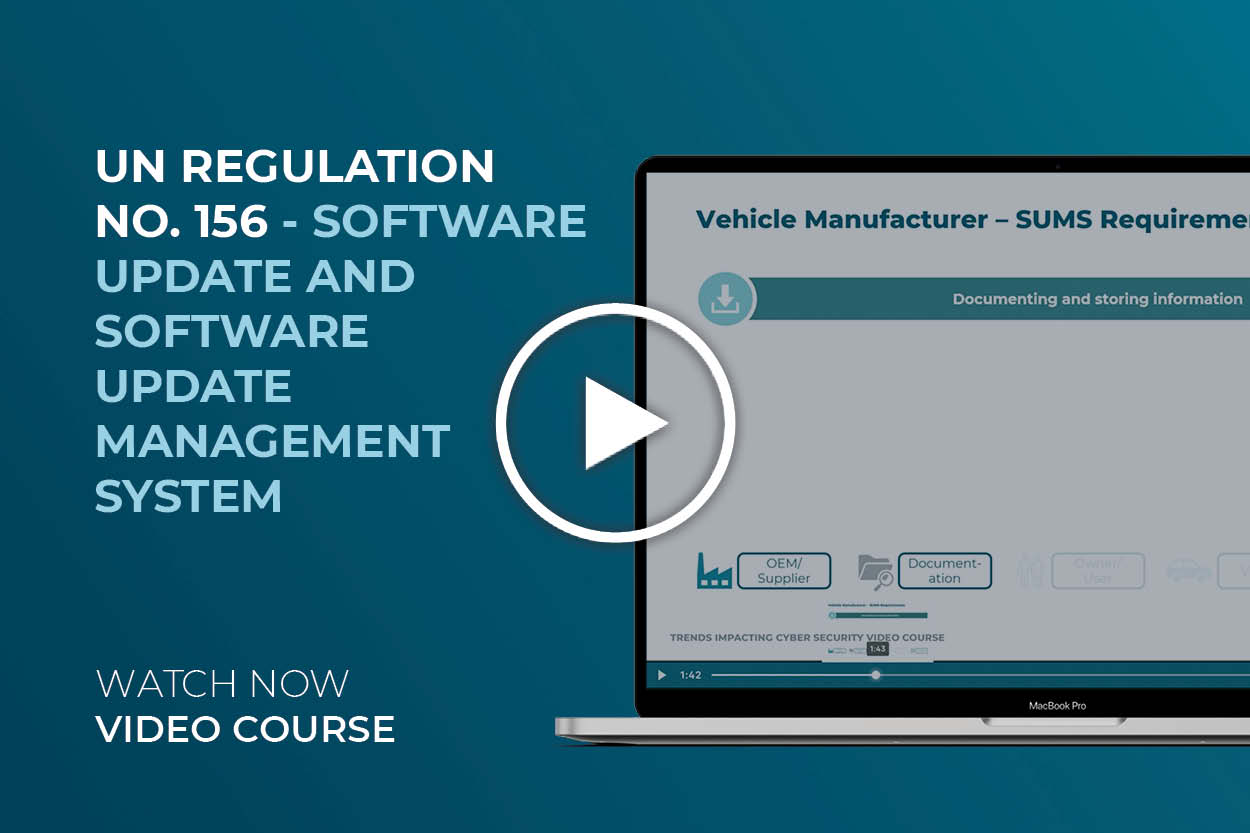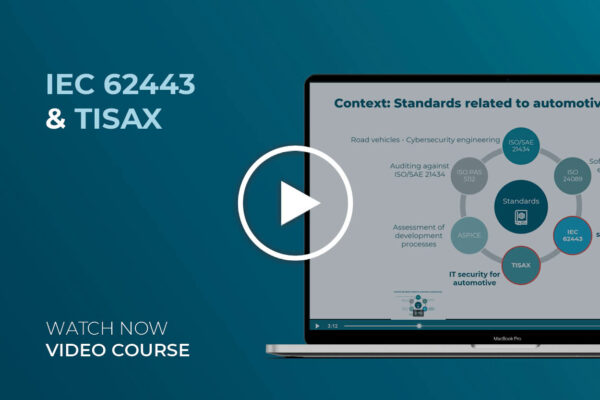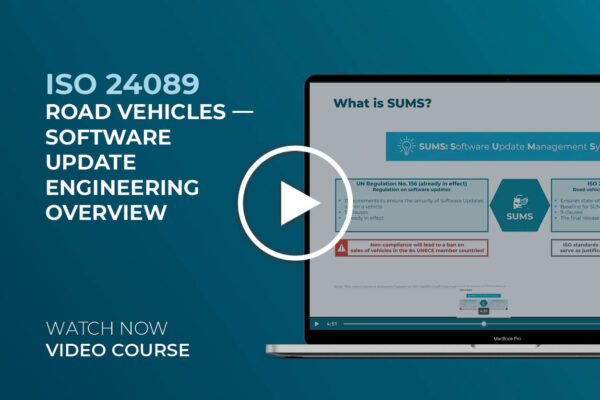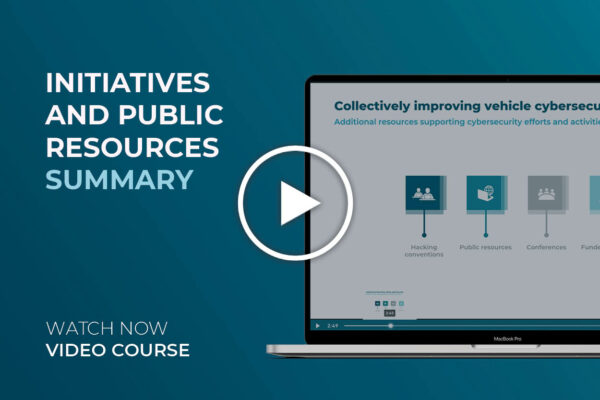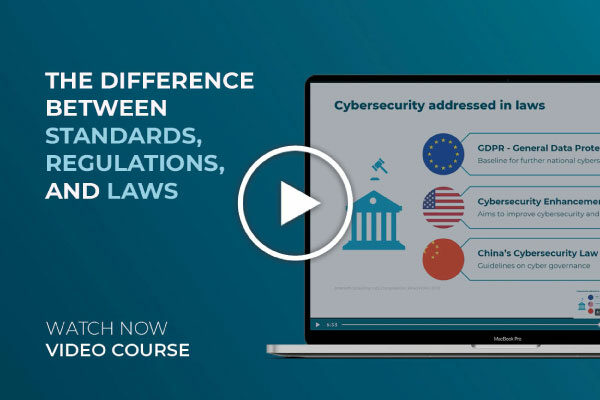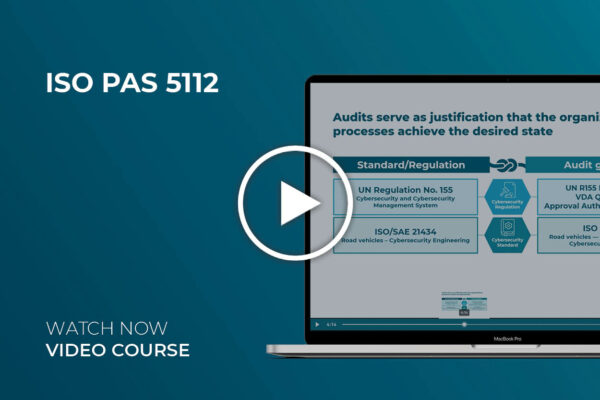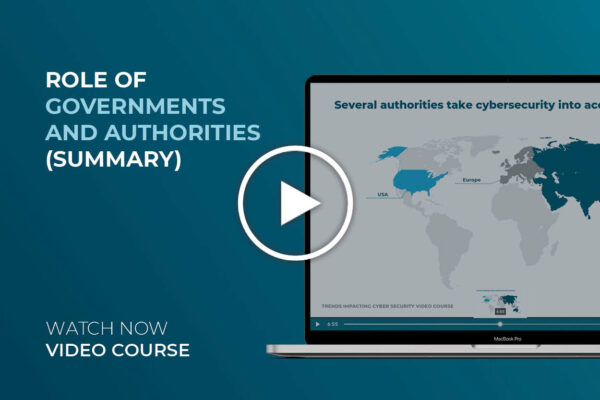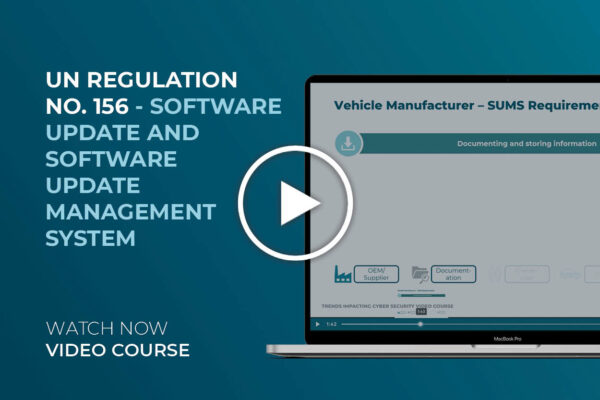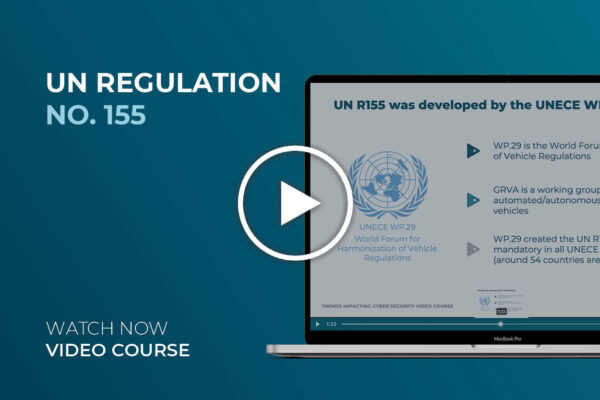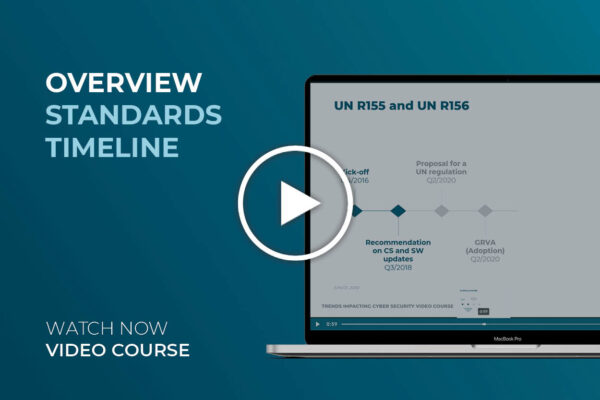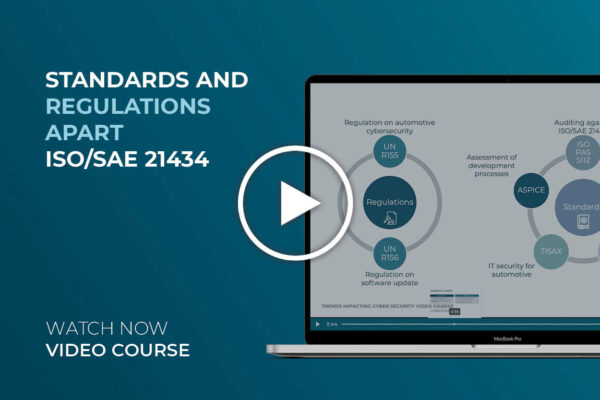UN Regulation No 156 (UNECE)
If you are looking for UNECE 156, you are referring to UN Regulation No. 156 Software Update and Software Update Management System – in short UN R156. This video course will introduce you to this most important regulation regarding software updates in the automotive industry. Learn about the far-reaching impact of UN R156 not only on OEMS but far beyond. Tune in now.
UN Regulation No 156 (UNECE WP.29): Obtain a comprehensive overview with this video course
In this video course “UN Regulation No. 156 (UNECE)”, you will learn why UN R156 is so important for the automotive industry in terms of software updates. One thing is clear: software updates are a huge step forward for the entire industry in terms of efficiency, costs and new opportunities. However, because of the risks involved, they are also a serious issue that requires specific regulations and requirements. UN Regulation No. 156, developed by the UNECE WP.29, is the regulation that provides harmonization and binding – and is mandatory for type approval.
In this video course, you will learn about the roots, historical development as well as the (important!) timeframe of UN Regulation No. 156 and its exact application horizon, also with a view to the EU, USA and China.
In addition, the “UN Regulation No. 156 (UNECE)” video course discusses the exact structure of the document and begins to break down the specific requirements.
Learn what the regulation requires of the vehicle manufacturer (and the suppliers involved!) in terms of processes, documentation, security, and some additional requirements for software updates. Here you will also learn about: the requirements for the Software Update Management System (SUMS for short), the so-called RXSWIN and much more.
Last but not least, you will get an overview of the vehicle type approval process, learn about the connections to neighboring regulations and standards, especially ISO 24089, ISO/SAE 21434 and ISO 26262, and learn more about the specific responsibilities.
Get a complete understanding of UN R156 in one video course
Learn about UN Regulation No. 156 from a legal perspective
Are you responsible for compliance with standards and regulations and everything that goes with it? Then this video course is the perfect opportunity to get a complete overview of UN Regulation No. 156 – especially with regard to who is responsible for what within the automotive development value chain.
Understand UN Regulation No. 156 at the engineering / process level
Are you in the middle of getting an overview of which aspects, specific processes and related activities fall within the scope of UN Regulation No. 156? Then this introductory video course is a great opportunity. All aspects of UN R156 are explained in detail and in a generally understandable way.
UN R156: UN Regulation No. 156 Software Update and Software Update Management System – Video course content
In the intro you will get to know what you will learn in this video course which will lead you to a better understanding of what UN Regulation No 156 is.
II. Importance of UN Regulation No. 156
Here’s why the UN Regulation No 156 is important for the whole automotive industry.
III. Roots and scope of UN Regulation No 156
In this part of the course, we will explain the roots and scope of UN Regulation No. 156 and explain where and when it is mandatory.
Here we go deeper into the structure of the UN Regulation No 156 and the Software Update Management System requirements: on the level of the vehicle manufacturer and supplier; related to the vehicle type and including further aspects, such as the RXSWIN.
V. Requirements for the SUMS for the vehicle manufacturer
In this part we will provide an overview of the requirements for the Software Update Management System on the side of the vehicle manufacturer. Furthermore, we will describe the vehicle type approval process.
VI. Who is responsible?
After having seen what is required by the UN Regulation No 156, in this part we explain who is responsible and accountable.
VII. Sum Up
Finally, here we will sum up what you have learned about UN Regulation No 156 and its requirements.



